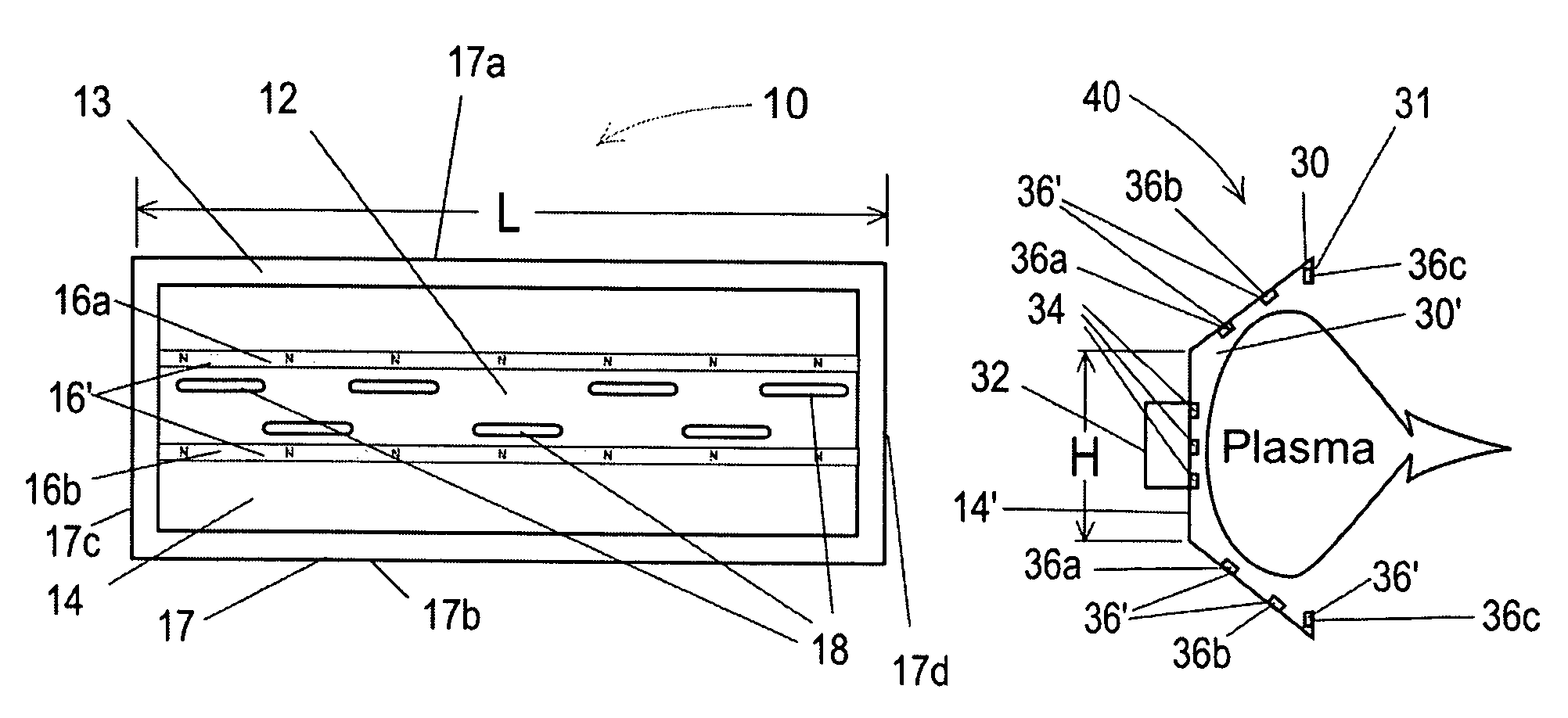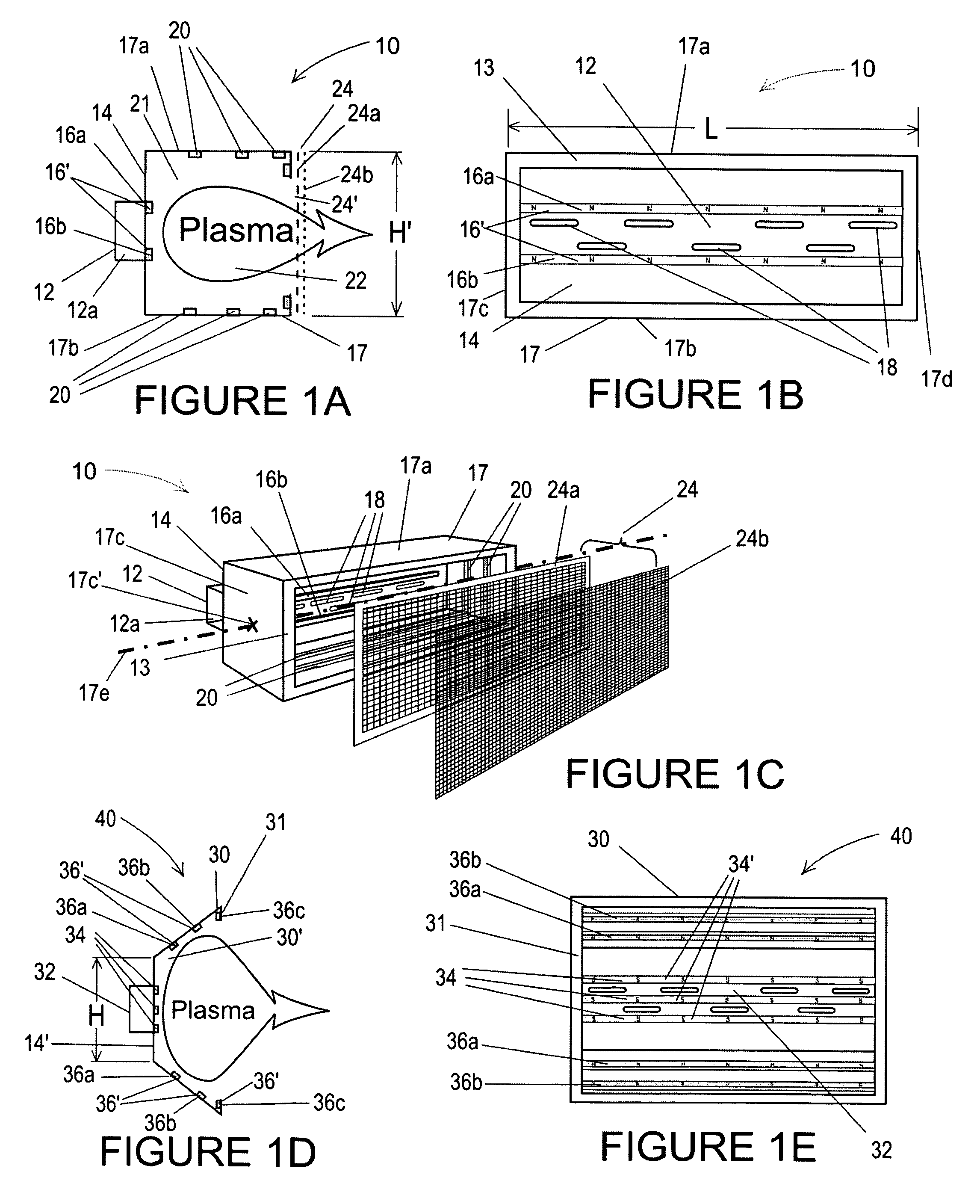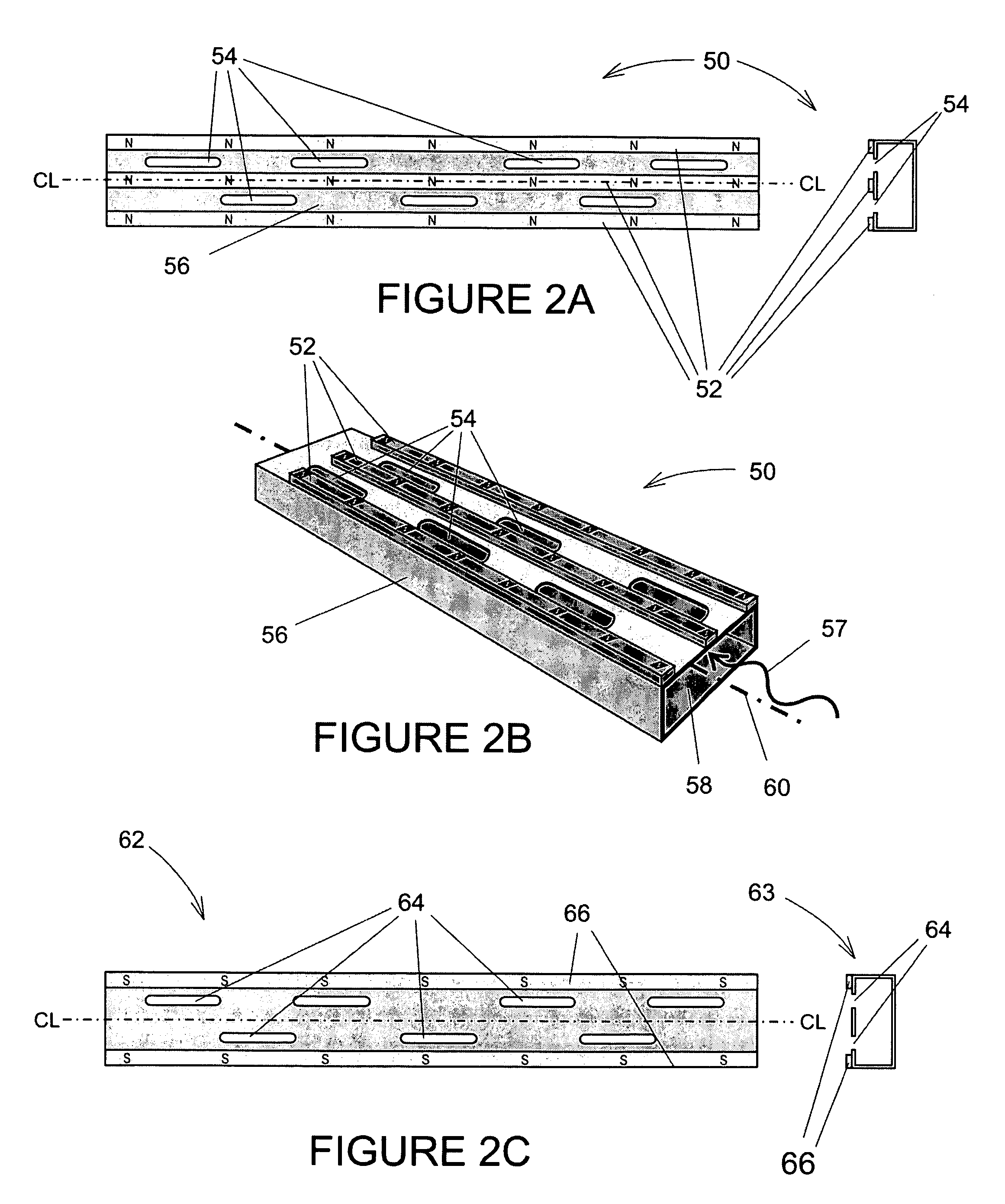Very large area/volume microwave ECR plasma and ion source
a plasma and microwave ecr technology, applied in the direction of ion beam tubes, coatings, chemical vapor deposition coatings, etc., can solve the problems of plasma non-uniformity, short service life of plasma generators, and limited lifetimes of dc ion sources (and dc electron sources)
- Summary
- Abstract
- Description
- Claims
- Application Information
AI Technical Summary
Problems solved by technology
Method used
Image
Examples
Embodiment Construction
[0042]The present invention is a large area and large volume microwave electron cyclotron resonance (ECR) plasma and ion source that can be used as either a high density, large area plasma source and / or as an ion source. It is electrodeless and windowless. Its applications include materials processing operations such as ion milling and ion implantation and ion propulsion for space vehicles. An analysis of the performance of the present invention, entitled, “High Power ECR Ion Thruster Discharge Characterization,” was presented by the inventor at the International Electric Propulsion Conference on Nov. 2, 2005, and is incorporated herein in its entirety by reference hereto.
[0043]FIG. 1A is an orthogonal, cut-away, schematic end-view of one embodiment 10 of a large area, large volume, plasma and ion source 10 according to the present invention. FIG. 1B is an orthogonal schematic front view of this embodiment of the ion source 10, and FIG. 1C is an oblique view of the ion source 10.
[00...
PUM
| Property | Measurement | Unit |
|---|---|---|
| pressures | aaaaa | aaaaa |
| frequency | aaaaa | aaaaa |
| frequency | aaaaa | aaaaa |
Abstract
Description
Claims
Application Information
 Login to View More
Login to View More - R&D
- Intellectual Property
- Life Sciences
- Materials
- Tech Scout
- Unparalleled Data Quality
- Higher Quality Content
- 60% Fewer Hallucinations
Browse by: Latest US Patents, China's latest patents, Technical Efficacy Thesaurus, Application Domain, Technology Topic, Popular Technical Reports.
© 2025 PatSnap. All rights reserved.Legal|Privacy policy|Modern Slavery Act Transparency Statement|Sitemap|About US| Contact US: help@patsnap.com



